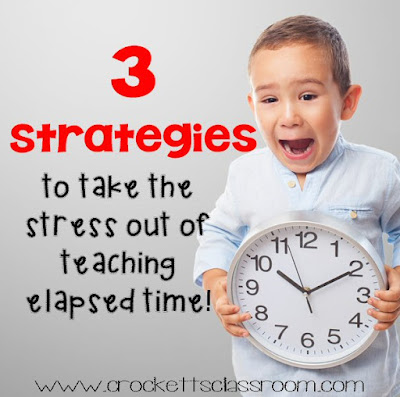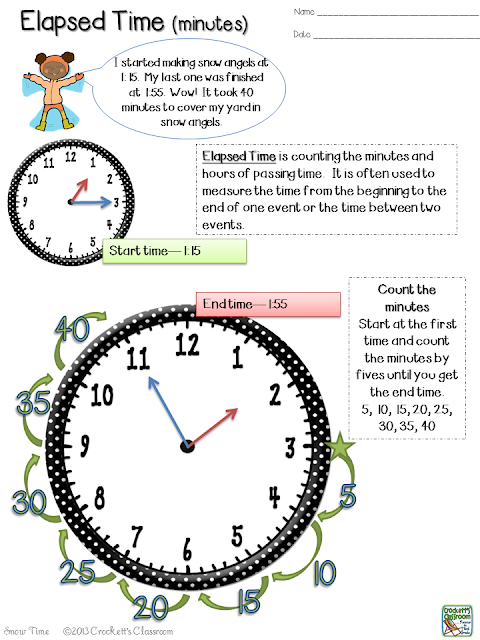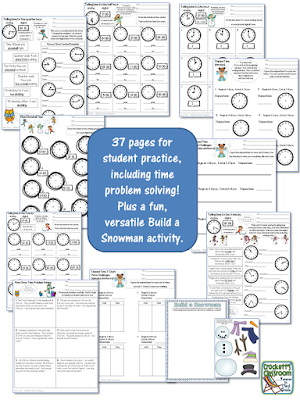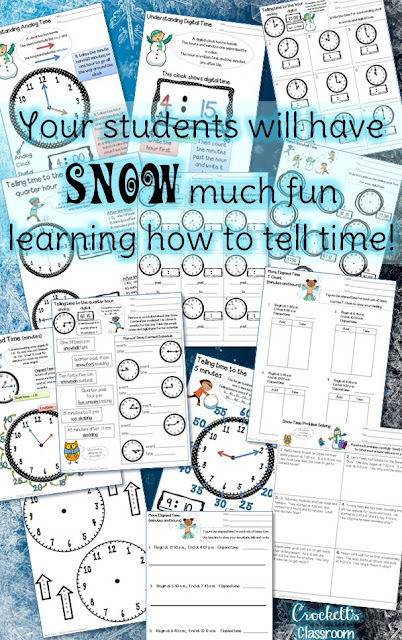Three Strategies for Figuring Elapsed Time
One of the most difficult skills with telling time is measuring elapsed time. Even as an adult I find myself counting the hours and minutes aloud just to make sure I do it correctly.
I show my students three different strategies to measure elapsed time. I don't know that one strategy is any better than the others. I like to give kids several choices and then let them use the method that works best for them.
Strategy 1 Use a clock face. I usually start with this strategy because it uses a clock face and kids can see that the minutes from one hour flow into the next hour when figuring elapsed time. This works best if the elapsed time is less than an hour. If the kids are counting elapsed time and end up with 75 minutes you'll have to show them how to convert 75 minutes into hours and minutes.
As this chart shows the student starts at the first time and then count the minutes to the ending time. If the starting time is not on a 5 minute interval that I usually have the students count by ones to get to the 5 minute and then they can more easily count by 5s. For example: How long is it from 3:32 to 3: 50? "3:33, 3:34, 3:35, 3:40, 3:45, 3:50. That would be 18 minutes." (It's easier to see on a clock face.) Another tip is to have a worksheet the kids can mark on with their pencil. That way they can draw the little "hopping" marks to then count the minutes.
Strategy 2 Use a flat number line. A clock is a type of number line but when figuring elapsed time that is more than an hour using a flat number line may be easier. Begin with the beginning time. Draw a large jump (mountain) to jump into the next hour. In this example we jumped from 1:47 to 2:47. Kids will need to understand when jumping ahead one hour only changes the hour, the minutes don't change yet. When the hour jumps gets you into the needed hour, begin counting the minutes. Again, I ask students to count the single minutes to get to a five minute interval. Keep jumping ahead by 5s until you can't jump anymore without going past the time. You may need to jump more single minutes to get to the ending time. Finally, count up the hours and minutes to know the elapsed time.
Strategy 3 Use a T Chart. I find this works well if kids have a good understanding of time. Write the starting time on the right. On the left you'll be keeping track of the elapsing hours and minutes. Advance by hours first, then 30 minutes, 15 minutes, 5 minutes and single minutes. If your students can only count in 5 and 1 minute intervals this strategy will still work, the T Chart will just be longer.
Here's a free download to begin showing your students how to figure elapsed time.
The full version of Snow Much Fun with Time is available from Crockett's Classroom on TPT.























